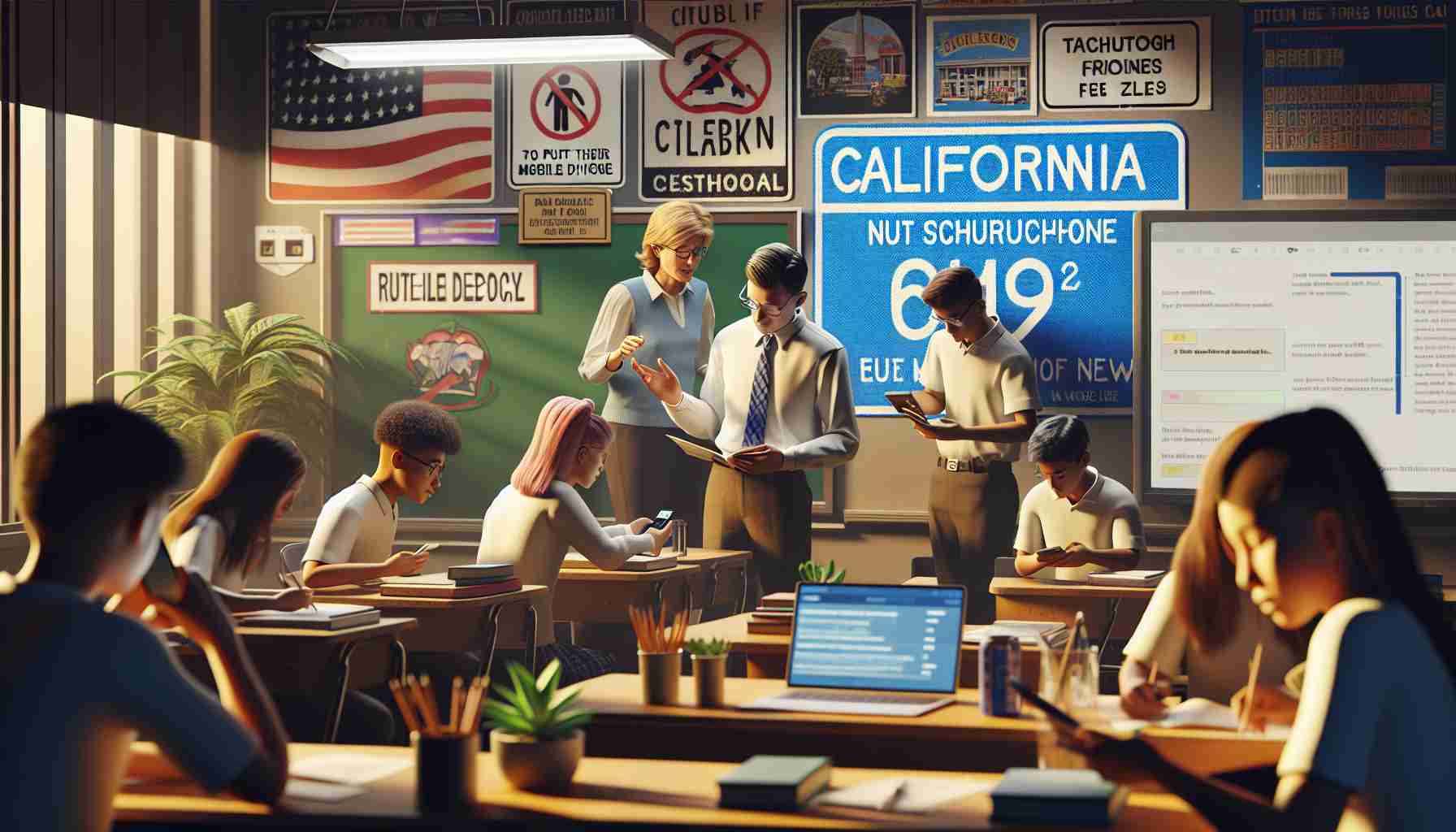
In a significant move aimed at improving classroom focus, California Governor Gavin Newsom has signed a law that mandates schools to regulate students’ smartphone usage. The legislation requires educational institutions to either impose a complete ban or restrict the use of smartphones on campus, effective from July 1, 2026.
This new law is part of broader efforts to reduce distractions in classrooms and address the detrimental effects of social media on students’ mental health. Schools will be tasked with developing protocols to ensure that their students remain engaged in their academic pursuits and interpersonal development, rather than being preoccupied with their devices.
Officials highlighted that the law seeks not only to enhance educational outcomes but also to foster a healthier environment for young learners. The focus is on encouraging students to concentrate on their studies and their social skills rather than becoming overly reliant on technology.
Other states such as Florida, Louisiana, and Indiana have previously enacted similar measures, reflecting a growing trend across the nation toward mitigating smartphone distractions in educational settings. As schools adapt to these new regulations, they are expected to play a crucial role in shaping how students interact with technology while pursuing their education.
California Takes Bold Step to Regulate Student Smartphone Use in Schools
In a transformative initiative to enhance educational environments, California has enacted new regulations governing smartphone usage among students in schools. This legislation, signed by Governor Gavin Newsom, mandates that educational institutions either impose a complete ban or establish stringent restrictions on smartphone use on campuses. The regulations are set to take effect on July 1, 2026, marking a significant shift in how technology is integrated into educational settings.
Why Is This Law Necessary?
Studies have demonstrated that excessive smartphone use can lead to distractions during instructional time, affecting students’ learning and social interactions. In addition to mitigating distractions, the law aims to address growing concerns about the impact of social media on students’ mental health, facilitating a more focused and supportive learning environment.
Key Questions and Answers
1. **What kind of restrictions will schools be permitted to enforce?**
Schools can choose between a total ban on smartphones or implementing specific guidelines that regulate their use during school hours. This may include requiring devices to be stored in lockers or turned off during classes.
2. **How do schools plan to enforce these regulations?**
Many schools will appoint designated staff to monitor compliance, while others may integrate technology solutions that limit smartphone capabilities on campus.
3. **What are the expected benefits of this legislation?**
Advocates believe that the reduction of smartphone use in classrooms will lead to increased concentration, improved academic performance, and better mental health outcomes for students.
Challenges and Controversies
While the initiative is widely supported, it does present several challenges:
– **Implementation Costs:** Schools may need to invest in additional infrastructure, training, and resources to enforce the regulations effectively.
– **Stakeholder Pushback:** Some students and parents may resist the changes, arguing that smartphones are essential for communication and safety. The balance between security and educational integrity remains a contentious point.
– **Equity Concerns:** There is also a risk that such restrictions could inadvertently disadvantage students from lower-income backgrounds who rely on smartphones for educational resources or communication with caregivers.
Advantages and Disadvantages
Advantages:
– **Enhanced Focus:** Reducing smartphone distractions can lead to better student engagement and improved academic outcomes.
– **Improved Mental Health:** Limiting exposure to social media may decrease anxiety and depression related to online interactions.
Disadvantages:
– **Limited Access to Information:** Banning smartphones could hinder students’ access to learning resources and digital tools that can enhance education.
– **Safety Concerns:** Parents may worry about their children’s safety without the ability to contact them easily during school hours.
As schools prepare to comply with the new regulations, the California legislation reflects a growing recognition of the need for balance in the use of technology in education. With the goal of fostering a healthier and more focused learning environment, the effectiveness of these regulations will depend significantly on each school’s ability to adapt and innovate.
For more information on educational policies in California, visit California Department of Education.
The source of the article is from the blog bitperfect.pe
